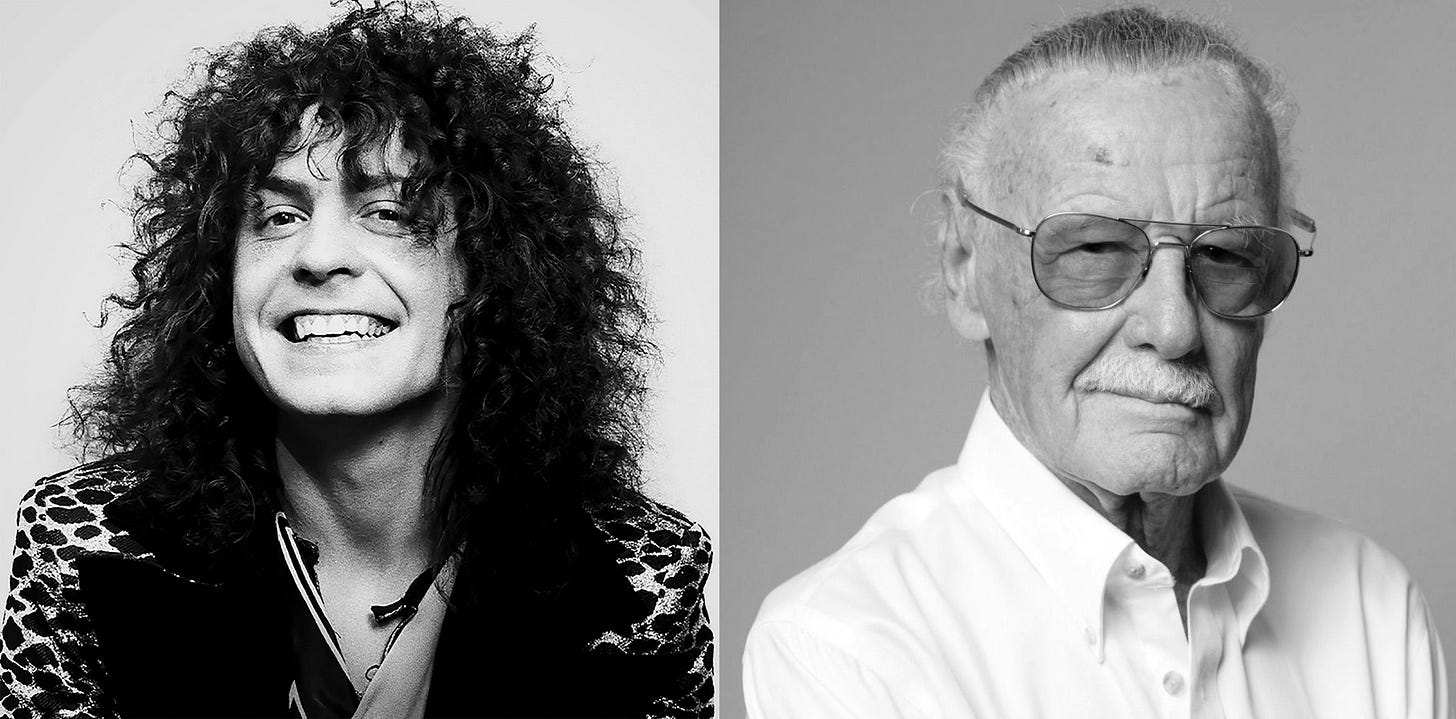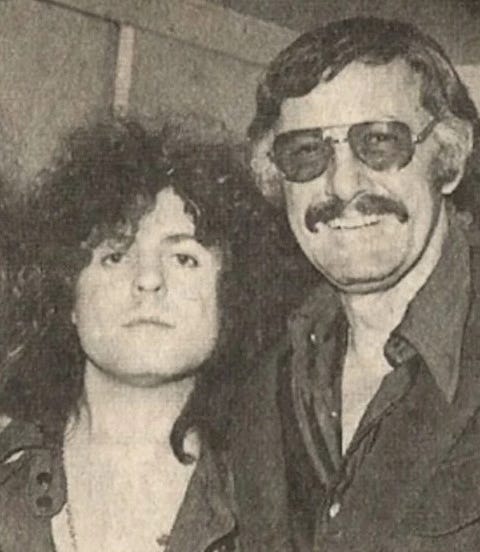Marc Bolan & Stan Lee: Where Riffs and Heroes Converge
In 1975, a conversation between the glam peacock and Marvel’s mastermind sparked a dream that never caught fire: a superhero born halfway between electric riffs and colorful speech bubbles.
1975 in London wasn’t just another year, but a crossroads where the city seemed to hold all the contradictions of the century.
On one side, tragedy: the Moorgate tube crash, forty-three dead and seventy-four injured — the worst accident in London Underground history during peacetime. Then the bombs, ripping through air and trust: at the London Hilton Hotel, with two killed and sixty-three injured; at Green Park station, with one dead and twenty injured. BBC news delivered the horror with its trademark voice. Politically, history was made: Margaret Thatcher became the first woman to lead a major British party, while the nation was called to vote on its membership in the European Economic Community.
But 1975 wasn’t only blood and politics. It was also a year when London’s music boiled like a pot left too long on the stove: punk began to stir with the Sex Pistols’ first gig, glam rock still shimmered in neon, prog rock searched for new galaxies, reggae surged through clubs with Bob Marley & The Wailers setting the Lyceum on fire. And on the radio, Bohemian Rhapsody exploded, bound to become not just a hit, but the immortal anthem of an era.
Amid these contrasts of light and shadow, something curious happened: Marc Bolan, the glittering peacock of T. Rex, and Stan Lee, the man who filled generations’ dreams with superheroes, found themselves in conversation. Not just any chat, but a recording that today feels like a time capsule — a moment when rock and comics shook hands and imagined a shared future.
Behind the feathers and glitter, Bolan carried a genuine love for Marvel worlds. “I’ve been following Marvel since ’67,” he confessed a year later to a young Neil Tennant — who, before becoming half of the Pet Shop Boys, worked as an editor at Marvel UK. “The Silver Surfer was one of my favorites. Doctor Strange another. At the time, those comics were strange, different from the others. Then they became more commercial… but Stan Lee remains great.”
He wasn’t just a reader: Bolan wanted to write for Marvel. “I have a sci-fi story collection coming out. Inside, there are superheroes. Not like yours… but they could become them. Stan was thrilled by the idea.”
That paper-and-ink universe seeped into his songs: Doctor Strange surfaced in Mambo Sun, the Silver Surfer in Teenage Dream. And when Tennant pointed it out, Bolan grinned: “My new album, Futuristic Dragon, starts with an intro that feels like the beginning of a Doctor Strange story. And the cover? Looks like it came straight out of one of your comics.”
In those years Bolan was also hosting a BBC show, interviewing his heroes. One of them was Stan Lee. Their chat revealed mutual respect and fascination, and also an idea that could have changed history: to create a new superhero together. Bolan envisioned a character halfway between Michael Moorcock’s Elric, Thor, and the Silver Surfer: an Electric Warrior projected into the future, nothing like Conan the Barbarian. “I don’t like that guy,” he said. “I’d rather have a hero less crude, more complex, more in tune with today.”
Looking back, Bolan described Stan as “a solid gold easy hustler” — sharp, brilliant, capable of selling you a universe as casually as he’d offer a coffee. A true compliment, because in Lee’s boundless energy Bolan recognized the authentic spirit of comics.
The superhero born from their talk never saw the light, and maybe that’s for the best: some ideas work better as unrealized possibilities, half-open doors to worlds we might have explored. Yet if you listen to that tape today, you can still hear the hiss of the reel, the excitement in their voices, and above all the exact moment when rock and comics — two seemingly distant universes — met at the same crossroads and realized they’d been speaking the same language all along.






